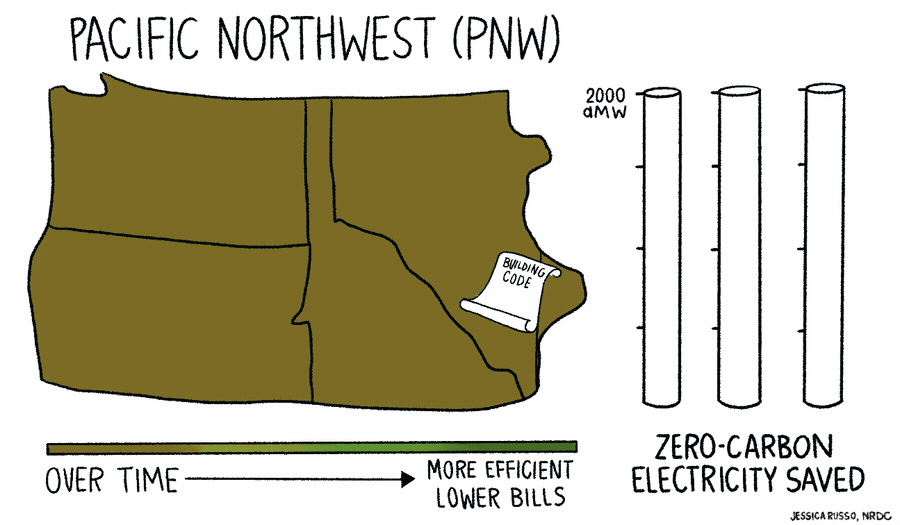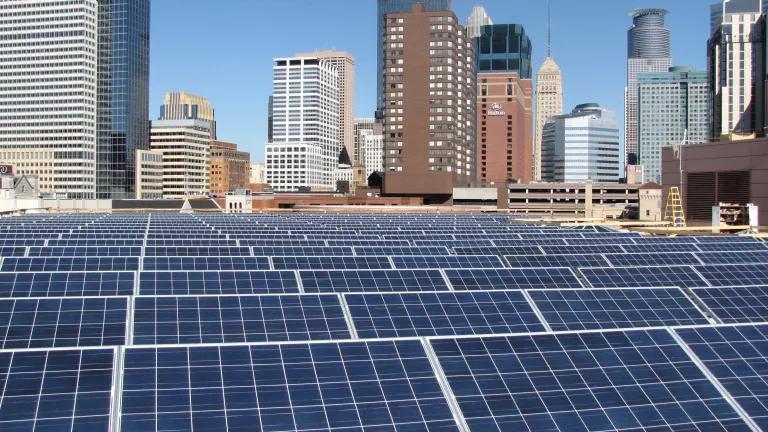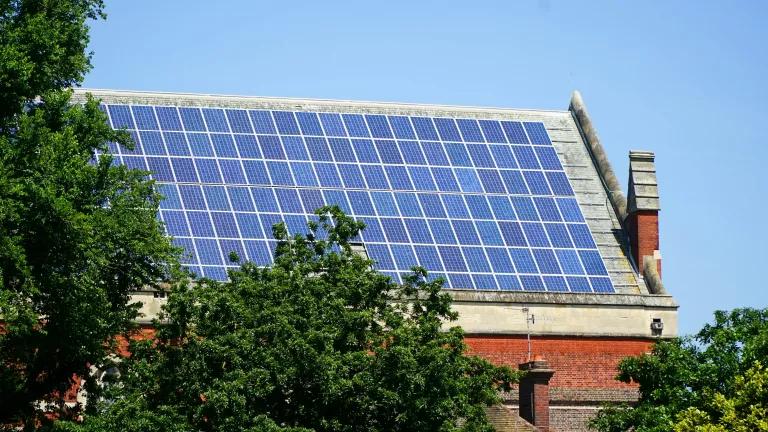A First: Converting Energy Efficiency Gains into Clean Power

Can a utility in one region buy some of the pollution-free electricity that a utility in another region saves when its customers improve their energy efficiency? We’re about to find out. And if this effort succeeds, it will be a groundbreaking clean energy transaction between the Pacific Northwest and California, benefitting all involved.
NRDC helped create, and is supporting, a proposal to send to California electricity produced in the Pacific Northwest, and not needed there because its customers exceeded energy savings targets established by regional planners to ensure adequate Northwest power supplies. This would be the nation's first interregional transfer of carbon-free electricity made available as a result of savings from energy efficiency measures such as building and appliance upgrades. Electricity flows across transmission lines between states and regions all the time, but this will be the first long-term sale derived exclusively from verified energy efficiency gains.
It would work like this: the Oregon-based Bonneville Power Administration (BPA), which markets (mostly) hydropower to utilities in the Pacific Northwest region, has created a zero-carbon electricity surplus by securing multi-year electricity savings exceeding energy efficiency targets that reflect the Northwest’s own power needs. California-based Southern California Edison (SCE) wants to sign a contract to buy and transmit that surplus power to help meet its share of the state’s ambitious greenhouse gas reduction goals. This “proof of concept” proposal is pending before the California Public Utilities Commission (CPUC). There could be similar opportunities for such interregional sales throughout the vast North American power grids (covering the West, East, and Texas).
The basic premise is that energy saved through efficiency is effectively a zero-carbon electricity “resource.” This is because smarter energy use by one set of households and businesses frees up part of the power generation previously used to serve them, and that no-longer-needed power is then available to serve additional customers without any net increase in carbon emissions or other pollution. As a result, additional electricity can be sold to neighboring states or regions without raising emissions. Finding a way to meet more electricity needs from the same source and quantity of power is the equivalent of creating more zero-carbon electricity, regardless of the type of power plant involved. In this case, the source of the electricity is zero-carbon hydropower dams.
Interregional energy efficiency resource transfers have been anticipated for decades, but numerous legal, practical, and economic barriers had to be overcome in order to make this proposal possible.
The History
In 1980, “to assist the electrical consumers of the Pacific Northwest through use of the Federal Columbia River Power System to achieve cost-effective energy conservation” and “to assure the region of an efficient and adequate power supply,” Congress passed the Pacific Northwest Electric Power Planning and Conservation Act (“the Northwest Power Act”). Notably, the legislation defined the term “resource” to include both “electric power” and “actual or planned load reduction resulting from . . . a conservation measure.”
In a June 1982 presentation to the California Energy Commission, I included a reference to the “magnitude and cost of Northwest conservation resources potentially available for export” to California. In 1983, a former legal counsel to the California Energy Commission explored the issues further, in a prescient article called “Pacific Northwest Conservation for California: The Mutual Benefits of Long-Term Cooperation.”
The decades of delay in bringing such a transfer to fruition in no way reflects poorly on the Northwest’s energy efficiency performance. Cumulative efficiency savings across Idaho, Montana, Oregon, and Washington now exceed 6,000 “average megawatts” (the equivalent of more than five Seattle-sized cities’ annual needs), making energy efficiency the region’s second-largest way of meeting customers’ electricity service needs, after hydropower.
The Northwest’s annual electricity bills are $4 billion lower as a result, and a robust regional energy efficiency infrastructure has emerged, including the Northwest Energy Efficiency Alliance (which coordinates utility programs across the region) and the Regional Technical Forum (which establishes authoritative standards for measurement and evaluation of savings from those programs). Using protocols established by the forum, BPA has demonstrated the capacity to exceed its annual efficiency goals, which are based on a regularly updated plan for meeting long-term regional power needs with the optimal mix of energy efficiency and power generation.
But historically BPA has received no financial rewards for exceeding its efficiency targets, and indeed it typically incurs automatic losses, since those incremental savings mean reduced electricity sales and revenues for BPA and its regional utility customers. Those lost revenues cannot be made up by reselling the saved energy to utilities in California or elsewhere at the relatively low prices typical of short-term power markets (where the true value of continuously delivered clean energy supply isn’t recognized).
The proposed SCE purchase provides a way to overcome that disincentive, by paying the Northwest a bonus for the carbon-reduction benefits and assured multi-year availability of its energy efficiency resources. SCE has determined that the purchase is a cost-effective addition to the clean power it needs to meet its company-wide decarbonization goals. Public hearings on the proposal are set for April 13-14 at the CPUC, with a final decision anticipated by October. If the CPUC approves, BPA is committed to “investigate options for offering larger-scale products for the transfer of carbon-free energy, derived by EE resources and made available through additional incremental EE savings, to California.”
Over the last several years, BPA and partners like NRDC and the Northwest Energy Coalition have helped create a broad consensus on the potential value of converting a portion of the Northwest’s untapped energy efficiency resources into long-term zero-carbon power transfers. CPUC approval of this “proof of concept” application will open the door to a host of worthy successors.


